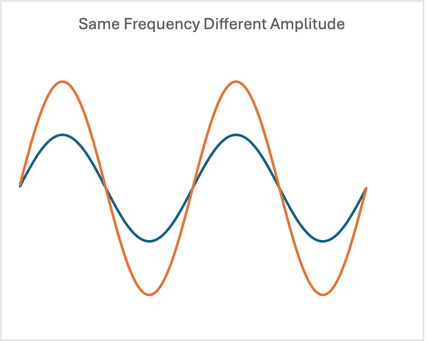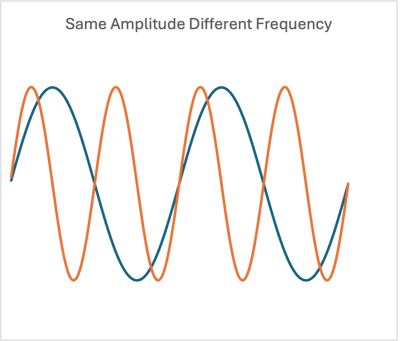Sound Advice from an Old Firestop Guy – Part 2: What is Sound? And How is it Controlled?
In Part 1 of this series which appeared in the last issue of The Burn, we learned how ASTM E90 is used to measure sound transmission loss across a barrier and how the range of data gathered from testing is converted to a single number rating we call Sound Transmission Class (STC) which represents the sound transmission performance of a barrier. But have you ever stopped and contemplated what sound is? Are you curious how sound is affected by different barriers? Have you ever considered the answer to that philosophical question, does a tree falling in the woods make a sound if nobody is there to hear it? Today is your lucky day because we are going to take a closer look at sound, what it is, what measures can be taken to reduce sound transmission across a barrier, and how proper firestopping plays a major role. We might even answer that question about the tree.
In the Art of War, Sun Tzu states “If you know the enemy and know yourself, you need not fear the result of a hundred battles. If you know yourself but not the enemy, for every victory gained you will also suffer a defeat. If you know neither the enemy nor yourself, you will succumb in every battle.” When we talk about reducing sound transmission, we should treat sound as the enemy we aim to defeat. We should know our enemy which is the purpose of this article. Hopefully, you already know yourself and, if what Sun Tzu says is true, we should be well on the way to defeating the enemy.
Sound is all around us. It always exists, and it affects us in many different ways. The textbook definition of sound is that it is a vibration that propagates as an acoustic wave through a transmission medium such as a gas, liquid, or solid. Acoustics is a very technical subject, but if you think about it, we all intuitively know quite a bit about sound. Sound can be soft or loud, high-pitched, low-pitched, annoying, or pleasant. Because sound is a series of pressure pulses, you sometimes can actually feel it. Ludwig Van Beethoven, who famously wrote his 9th and final symphony well after he was fully deaf, was said to sit at the piano holding a pencil in his teeth, touching the other end to the soundboard so he could feel the vibration of the note. Sound truly is a multi-sensual phenomenon.
Many descriptive terms are used to define unique sounds, including amplitude, frequency, pitch, tone, quality, color, and timbre, to name a few. We are going to focus on the first two of these terms, amplitude, and frequency, because these are the two characteristics we use when measuring sound transmission loss. The other terms address the uniqueness of a sound. For example, you can play the same note (frequency) on a trumpet and a saxophone at the same volume (amplitude), but they sound different, even though the frequency and amplitude are the same. That is because the instruments mold the sound differently and the shapes of the sound waves vary depending on the instrument, and even because of the person playing the instrument.
All waves, not just sound waves, have an amplitude and frequency. For sound waves, changes in amplitude register to us as a change in volume which is measured in decibels. A decibel is one tenth of a bel, named in honor of Alexander Graham Bell, and in sound measurement it is 10 times the logarithm of the measured sound pressure divided by a referenced sound pressure. In the case of sound pressure decibels, the reference sound pressure is 20 µPa which is the typical human limit for hearing a 1000 Hz frequency. When the measured sound pressure is the same as the reference sound pressure, the sound level is calculated to be 0 decibels. In other words, a 0 dB signal represents the quietest sound a human can detect. Frequencies register to us as pitch, so the lower the frequency the lower the pitch, and vice versa. Frequencies are measured in Hertz. Very simply, Hertz is an indication of how many full cycle pulses occur in 1 second of time. So, a 100 Hertz frequency indicates that 100 wave pulses occur in 1 second.
When looking at a visual image of a wave pattern, we are most familiar with a transverse wave which is the type of wave we visually see when we are at the beach watching the waves roll in until they break at the beachfront. However, sound waves do not travel as transverse waves but rather as longitudinal waves. To illustrate this, in a longitudinal wave, the motion of the wave is in the same direction the wave is traveling, whereas, in a transverse wave, the wave motion is perpendicular to the direction the wave is traveling. Within this article, we will use transverse waves to illustrate how sound waves behave when confronted by a barrier as they are easier to visualize.
Below are two charts to further explain what is happening to a wave when we talk about changes in amplitude and frequency. Figure 1 shows the difference in wave pattern when a change in amplitude occurs, but the frequency remains the same. You can see that the peaks and valleys occur at the same time, but there is a change to the wave vertically. The sound represented by the orange wave would have the same pitch as the blue wave but would register as a louder sound. In other words, the orange wave has a higher energy level than the blue wave. Figure 2 shows the difference in wave pattern when the amplitude stays the same, but the frequency changes. In this particular case, the frequency is doubled from the blue wave to the orange wave. As you can see, the orange wave has four full cycles that occur in the same time period where the blue wave has two full cycles. If the chart represents 1 second of time, the blue wave would have a frequency of 2 Hz and the orange wave would have a frequency of 4 Hz.


Figure 1 - Different Amplitude Figure 2 - Different Frequency
Sound waves initiate from a vibration, which can come from any source that produces vibrations, such as a speaker cone or vocal cords or maybe a vacuum cleaner or a car speeding down a street, for example. They can also come from something impacting a surface. However, when we are talking about STC performance, we are only addressing airborne sounds or those sounds that impact a surface after traveling through air. The vibration creates pressure pulses that travel until they reach an object that receives the wave, such as our ears, and the sound wave is interpreted as noise. As they travel, sound waves will lose energy through various means, producing a reduction in amplitude over distance traveled. This is especially impacted when there is a barrier, such as a wall or floor, where the wave will undergo changes in energy level in a significant way. That loss of energy from one side of a barrier to another is called sound transmission loss.
The image below shows what happens to sound waves when they reach a barrier, such as a wall. Earlier, I mentioned that sound waves lose energy as they travel, but actually, that is not really the case. What is actually occurring is an energy balance. Newton’s First Law of Thermodynamics tells us that energy cannot be created nor destroyed, that it can only be converted from one form to another. So take a look at the image in Figure 3 while I explain. A sound wave with a known decibel level will travel freely in air with virtually no energy loss until it impacts something such as a sound barrier. The initial energy the wave has that impacts the barrier is called the Incident Energy, and is represented by the wave labeled Ei. Some of the wave energy will reflect off the wall and some energy will transfer through the wall. These energies are represented by the labels Er and Et respectfully. You will notice that the amplitude of the Et wave reduces as it penetrates through the wall, but we know from the 1st Law that energy cannot be created nor destroyed, so where does the energy go? That energy is spent causing the vibration of the materials, and that vibration causes friction to occur. We know instinctively, when we rub our hands together on a cold day, that friction produces heat. It is no different here. The energy loss due to friction is actually energy that is transformed into heat energy which dissipates into the air. In actuality, the incident energy (Ei) equals the sum of the Reflected Energy (Er) plus the Energy Transmitted (Et) plus the Energy absorbed or transformed into heat (Ea). The energy is balanced. Sir Isaac Newton was correct.
 Figure 3 - Energy balance for sound waves impacting a wall
Figure 3 - Energy balance for sound waves impacting a wall
So why is all of this important? Because this is all part of knowing your enemy. If you know what causes your enemy to lose energy, you know what to concentrate on to defeat the enemy. Here is where firestopping emerges as a critical strategy for improving sound transmission loss. The first thing to realize is that where air freely travels from one compartment to the next, sound waves will also travel freely as there is nothing there to combat the sound wave and reduce the energy. Sealing against the free travel of air is the primary target on which to focus because it will have the greatest effect on the reduction of sound transmission, weakening the enemy. In proper firestopping, we install materials that effectively stop fire and smoke from moving from one compartment to another. From a sound transmission perspective, it is the smoke control that makes firestopping an excellent weapon used to defeat the enemy. So, if you have a fire-resistance-rated barrier that requires a firestop for joints and penetrations, look for systems that include low L ratings, as these will be the best choice, not only for smoke control but also for sound control.
Now for the big question, does a tree falling in the forest make a sound when nobody is there to hear it? Maybe you picked up on this earlier in the article, but a sound wave is just a sound wave until it is received by a listener and interpreted as noise. So as the tree falls and impacts the ground, it will produce a sound wave because the action of impacting the ground will create pressure pulses. Whether it produces a noise or not depends on the presence of someone there to interpret the sound.
To be continued…. Next topic, what firestop materials are the best sound performers.
This article, by Tim Mattox, Senior Manager of Systems & Testing Development, originally appeared in the Fall Wrap-Up 2024 edition of The Burn.






